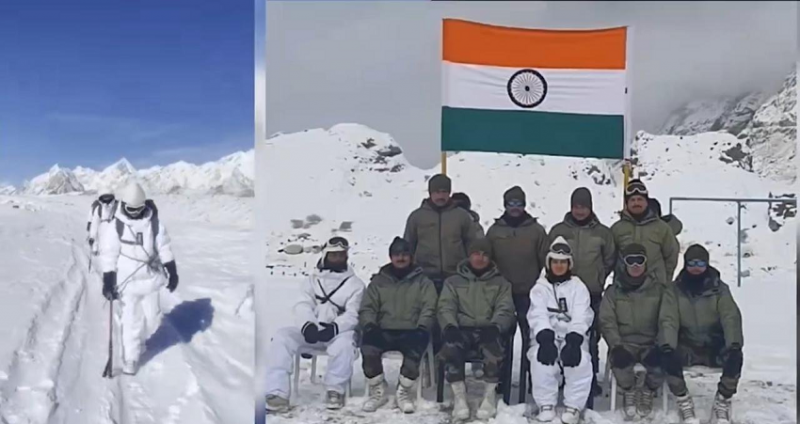
Officials revealed on Saturday that the Indian Army's presence in the Siachen glacier, the world's highest battlefield, has been strengthened over the past four decades with the introduction of heavy-lift helicopters, logistic drones, and improved infrastructure. This year marks the 40th anniversary of the Indian Army's control over the strategically significant Siachen glacier, with significant advancements in operational capabilities owing to infrastructure development in recent years.
Situated at an altitude of approximately 20,000 feet in the Karakoram mountain range, the Siachen glacier poses extreme challenges to soldiers, including frostbite and high winds.
Under "Operation Meghdoot," initiated on April 13, 1984, the Indian Army secured full control over the glacier.
An official remarked, "The Indian Army's control over the Siachen glacier is not only a tale of unmatched courage and determination but also a remarkable journey of technological progress and logistical enhancements, transforming it from one of the most daunting terrains into a symbol of resilience and innovation."
Recent initiatives, particularly over the last five years, have significantly improved living conditions and operational capabilities for personnel stationed in Siachen, the official added, speaking anonymously.
In January last year, Captain Shiva Chauhan from the Army's Corps of Engineers became the first woman officer to be operationally deployed at a frontline post in the Siachen glacier.
Enhancements in mobility have been notable, with the development of an extensive network of tracks and the introduction of all-terrain vehicles (ATVs) facilitating movement across the glacier, another official explained.
Innovations such as DRDO-developed ATV bridges and high-quality "Dyneema" ropes in aerial cableways have aided in overcoming natural obstacles and ensuring seamless supply lines, even to remote outposts.
The introduction of heavy-lift helicopters and logistic drones has notably improved the supply of essentials, especially during winters, to personnel deployed in isolated posts.
Moreover, soldiers' ability to endure the harsh conditions has been bolstered by the availability of special clothing, mountaineering equipment, and advanced rations.
Each soldier now carries pocket weather trackers for timely updates and avalanche warnings.
Connectivity improvements have ensured that forward posts in the northern and central glacier regions have access to fresh rations and vegetables, a reality made possible by new logistic initiatives.
Focus on enhancing mobile and data connectivity has led to the introduction of VSAT technology, revolutionizing communication on the glacier and providing troops with data and internet connectivity.
The Indian Army has also prioritized strengthening medical infrastructure in Siachen, with ISRO establishing telemedicine nodes offering critical medical support to troops, locals, and tourists in the Nubra valley.
Medical facilities in Partapur and the base camp boast top-notch medical specialists, state-of-the-art HAPO chambers, and oxygen generation plants, ensuring every effort is made to save lives in this challenging terrain, another official noted.
The HAPO chamber, a life-saving device, provides emergency treatment for conditions such as high-altitude pulmonary edema, breathlessness, and fluid accumulation in the lungs.
April 13, 2024: Commemorating 36 Years of Siachen Day
Remembering Valour Day: Honoring Courage and Sacrifice, All You Need To Know